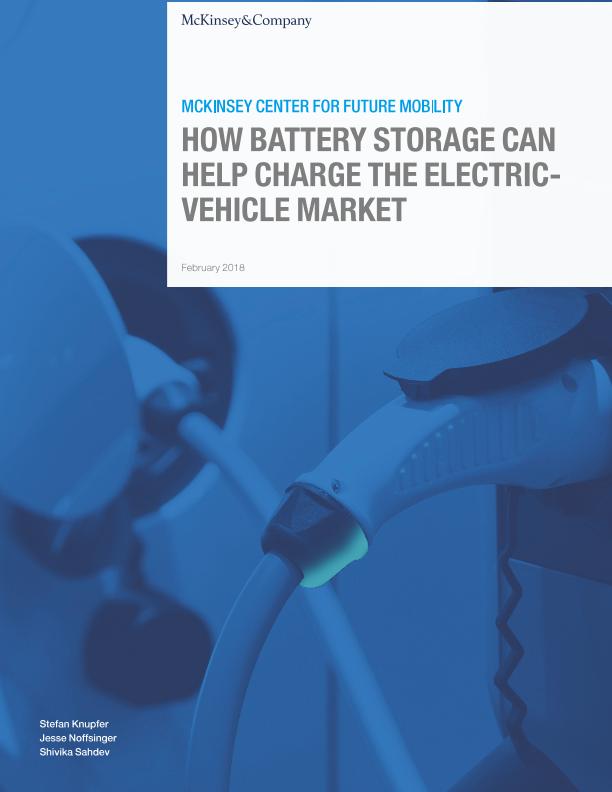How battery storage can help charge the electric-vehicle market

Contenido multimedia no disponible por derechos de autor o por acceso restringido. Contacte con la institución para más información.
| Tag | 1 | 2 | Value |
|---|---|---|---|
| LDR | 00000cam a22000004b 4500 | ||
| 001 | MAP20180006555 | ||
| 003 | MAP | ||
| 005 | 20180307172616.0 | ||
| 008 | 180306e20180201usa|||| ||| ||eng d | ||
| 040 | $aMAP$bspa$dMAP | ||
| 084 | $a892 | ||
| 100 | 1 | $0MAPA20170013747$aKnupfer, Stefan | |
| 245 | 1 | 0 | $aHow battery storage can help charge the electric-vehicle market$cStefan Knupfer, Jesse Noffsinger, Shivika Sahdev |
| 260 | $aNew York$b McKinsey & Company$c2018 | ||
| 520 | $aElectric vehicles are beginning to win considerable attention but are still rarely sighted on American roads. Through the first half of 2017, fewer than 800,000 battery EVs (BEVs) had been sold in the United States, or about 1 percent of all cars. But growth has been strong of late due to rising consumer acceptance, improved technology, and supportive regulation. McKinsey estimates that there could be ten to eleven million BEVs on US roads by 2030. | ||
| 650 | 4 | $0MAPA20100011164$aVehículos eléctricos | |
| 650 | 4 | $0MAPA20080557287$aAutomóviles | |
| 650 | 4 | $0MAPA20080586546$aNuevas tecnologías | |
| 650 | 4 | $0MAPA20080600877$aDesarrollo sostenible | |
| 700 | 1 | $0MAPA20180002465$aNoffsinger, Jesse | |
| 700 | 1 | $0MAPA20180002472$aSahdev, Shivika | |
| 710 | 2 | $0MAPA20080442569$aMcKinsey & Company |

